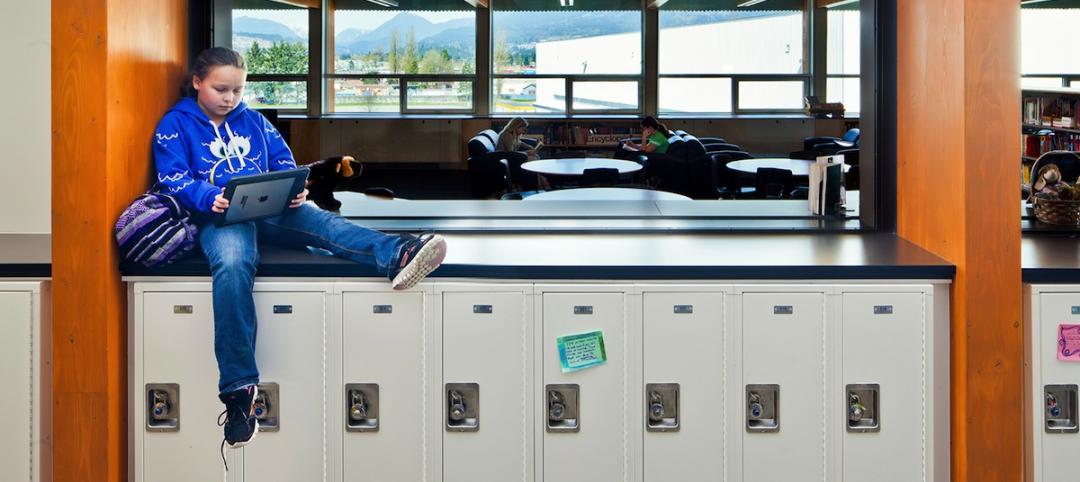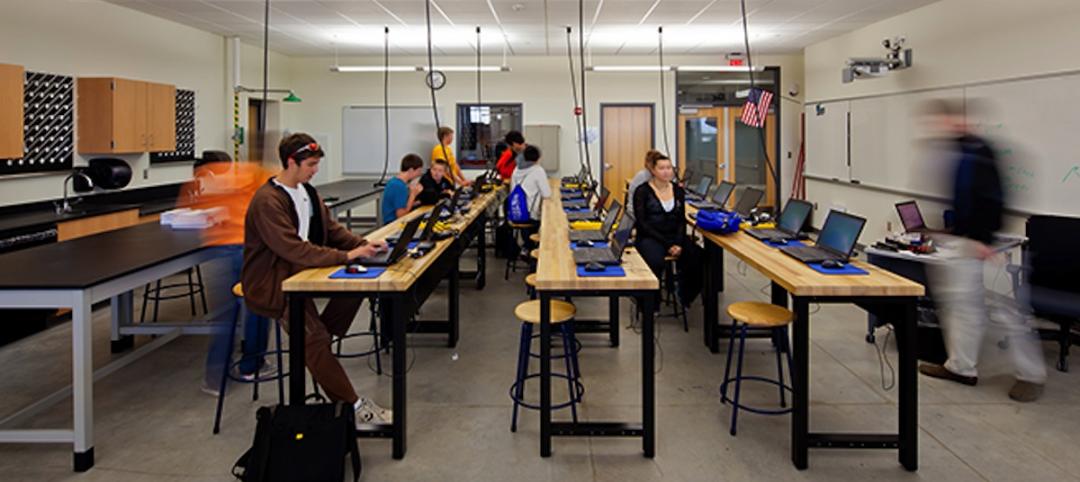Can the use of wood in school construction create healthier, safer, more productive learning environments?
In Japan, there's an ongoing effort by government officials to construct school buildings with wood materials and finishes—everything from floors and ceilings to furniture and structural elements—in the belief that wood environments have a positive impact on students.
Officials with Japan's Ministry of Education believe wood has numerous endemic qualities that promote the learning process. Visually, they say, wood evokes feelings of warmth, softness, and "positive sensations" among students and teachers. Wood's natural insulating properties help control temperature and humidity swings and sound reverberation, and its shock absorbency reduces the risk of injury. And a three-year study of 700 schools by the Japanese Wood Academic Society reports some data to indicate reduced incidence of influenza outbreaks in wooden schools compared to flu outbreaks in reinforced concrete facilities.
While the research on the benefits of wood in schools is largely anecdotal, the Ministry of Education is fully committed to promoting the social and cultural aspects of this traditional Japanese construction material. Since 1985, the ministry has subsidized school construction projects that incorporate wood with between $19,000 and $190,000, depending on the size and scale of the facility. This effort has resulted in a new breed of timber-framed schools and an even greater number of schools incorporating wood-based interior finishes, such as floors, walls, and ceilings. The ministry has committed subsidies through 2007.
At the 8,530-sm Gumma International Academy in Ota, scheduled for completion next month, exposed Southern yellow pine and Douglas fir glulam timbers form the structural post and beam elements for the roof of the K-9 school. Inside, local architect Ceolacanth and Associates specified wood flooring and ceiling panels.
However, the ministry has a long way to go in its mission to infuse Japan's school system with wood. Timber-framed schools make up just 2% of the country's 44,500 schools. Japan is one of the world's largest wood importers, but wood is generally more costly than concrete, and procuring materials can be a challenge for Building Teams, depending on the capacity of the local mills. There are also limitations to the size and scale of timber-frame structures, and they must meet strict fire and seismic safety standards.
Related Stories
Codes and Standards | Jun 18, 2015
New document addresses school safety and security
In an effort to balance security and fire safety features within codes, standards and planning, NFPA hosted a two-day workshop, “School Safety, Codes and Security”, last December. The findings are now available in an NFPA report.
K-12 Schools | May 12, 2015
Bjarke Ingels completes Danish high school sports and arts expansion
By placing parts of the new building beneath the football fields, the students are able to walk through the sunken sports hall at the center of the school´s courtyard to the classrooms, cafeteria, and out to the main entrance at street level.
Sponsored | | May 11, 2015
Fire-rated glass separation helps merge new and old pools into a single connected aquatics center
Clear fire-rated glazing helps create a light-filled, safe space for student athletes and spectators in Niles, Illinois.
K-12 Schools | Apr 28, 2015
How to create an environment where students want to succeed
According to a 2014 Gallup poll, our school system not only kills children’s creativity, but also takes its toll on their motivation, writes Perkins+Will's Tinka Rogic.
K-12 Schools | Mar 22, 2015
Budget woes may lead to moratorium on school projects in Alaska
The bill would suspend 70% cost reimbursement from state to localities.
K-12 Schools | Mar 18, 2015
The new Vo-Tech: Transforming vocational workshops into 21st century learning labs
It’s no secret: the way students learn today is different. But facilities are adapting to the increasing demands of technology, collaborative learning, and project-based instruction.
Retail Centers | Mar 10, 2015
Retrofit projects give dying malls new purpose
Approximately one-third of the country’s 1,200 enclosed malls are dead or dying. The good news is that a sizable portion of that building stock is being repurposed.
K-12 Schools | Mar 2, 2015
BD+C special report: What it takes to build 21st-century schools
How the latest design, construction, and teaching concepts are being implemented in the next generation of America’s schools.
Codes and Standards | Mar 2, 2015
Nevada moves to suspend prevailing wage rules on school projects
The Nevada Senate approved a bill that would suspend prevailing wage rules on school projects.
K-12 Schools | Mar 1, 2015
Are energy management systems too complex for school facility staffs?
When school districts demand the latest and greatest, they need to think about how those choices will impact the district’s facilities employees.
















